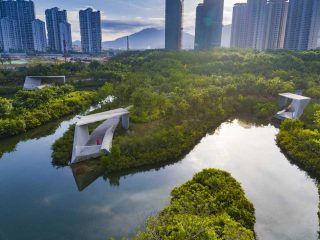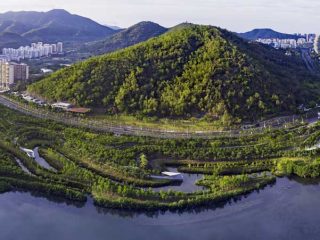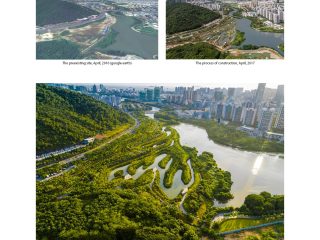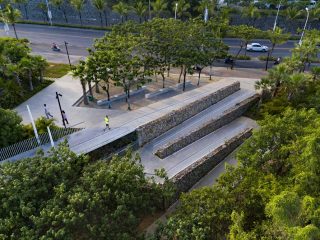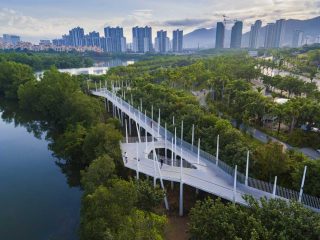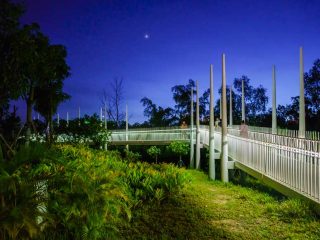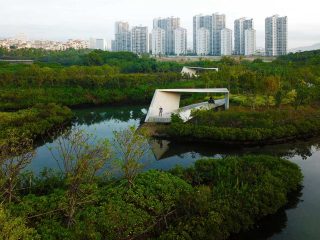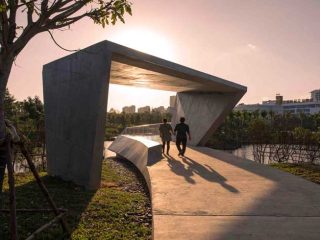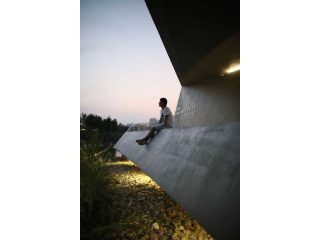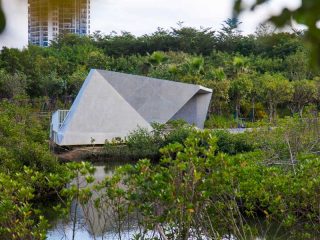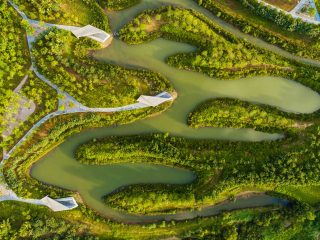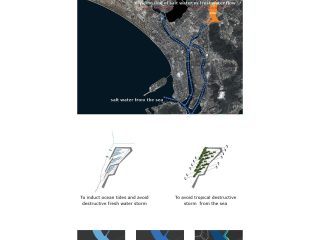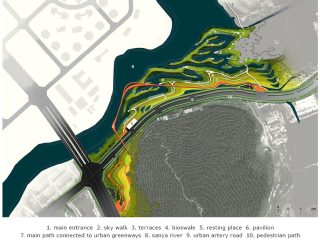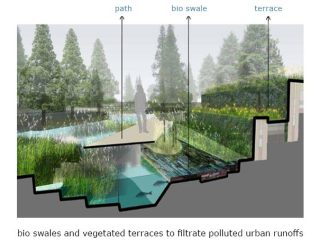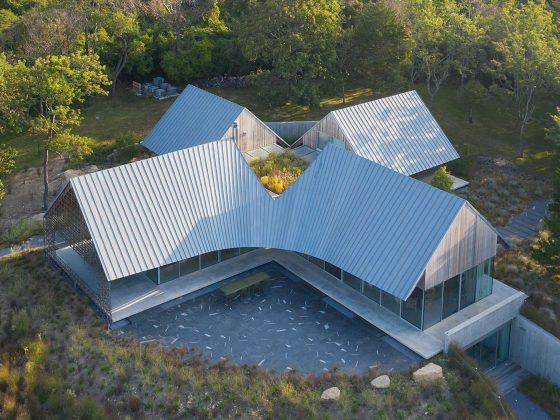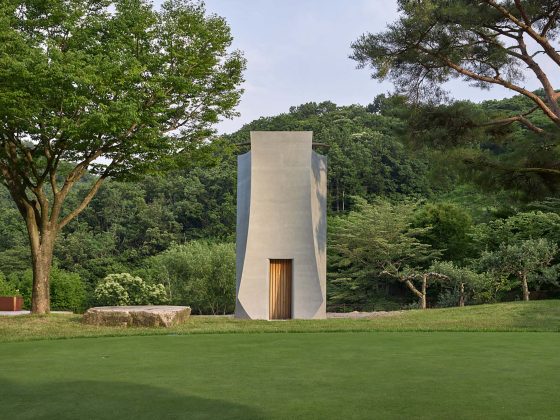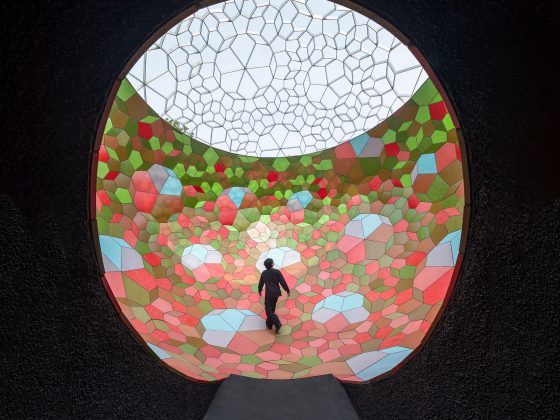Sanya Mangrove Park, China
쓰레기 매립지를 맹그로브 나무 공원으로 변신시킨 프로젝트
Turenscape | 터렌스케이프

Site and Challenges and Objectives
Ruthless development had destroyed natural landscapes in Sanya, a tropical tourist city in China’s Hainan Island. Waterways were polluted and filled with garbage. Concrete flood walls, built to claim land for development, killed the mangroves. In 2015, Beijing-based landscape architects Turenscape were commissioned to reverse the damage with a demonstration project rehabilitating the mangrove.
The 10 hectare site on the bank of Sanya River is critical to the ecological relationships between the sea and inland, where the sea tides meet fresh water. High concrete walls enclose urban landfill. There is a 9m steep drop from a road to the water, challenging public access.
The design objectives were to make the site a park showcasing urban renewal and ecological recovery. The challenges included (1) Wind: The strong annual tropical monsoon storms may destroy the fledging planting; (2) Water: Upstream monsoon storm water may wash young mangrove away; (3) Pollution: Urban runoffs may damage sensitive seedlings and biodiversity. (4) Access: public accessibility and natural restoration needed to be well integrated.
중국 하이난섬 최남단에 위치한 싼야는 중국에서도 유일하게 열대지방에 속하는 도시다. 사계절 온화한 날씨 덕분에 일 년 내내 관광객으로 북적일 만큼 인기있는 휴양지로 부상했지만, 그만큼 급속하게 이뤄진 개발로 인해 자연환경은 이루 말할 수 없이 파괴됐다. 쓰레기는 넘쳐났고 수로는 오염됐으며, 개발을 위해 섬 곳곳에 쌓은 콘크리트 제방들은 오랫동안 이 땅에서 살아왔던 수많은 맹그로브 나무들을 죽이기에 이르렀다.
그러던 2015년, 환경 파괴의 심각성을 인지한 시당국은 싼야 강 일대, 바닷물과 담수가 만나는 지점 약 10헥타르를 대대적으로 정비하기로 했다. 부지에는 높은 콘크리트 벽으로 둘러싸인 쓰레기 매립지가 자리해있었고 9m 높이의 급경사로 인해 사람들의 발길도 닿기 어려운 상황이었지만, 바다와 육지 생태에 매우 중요한 역할을 하는 만큼 환경적인 측면에서는 이 땅의 자연을 꼭 회복시켜야만 했다.
베이징을 기반으로 활동하는 조경 스튜디오 ‘터렌스케이프’가 이 프로젝트를 맡아, 파괴된 환경을 복구하고 맹그로브 나무를 되살리는 작업을 해나가기 시작했다.
‘자연의 회복을 보여줄 공원을 만드는 것’. 목표는 명확했지만, 작업에는 몇 가지 어려움이 따랐다. 해마다 불어오는 열대성 폭풍우가 아직 여물지 못한 식물들의 뿌리를 꺾어놓지는 않을까? 도시에서 나온 각종 폐기물로 인해 여린 묘목들이 제대로 자라지 못하는 건 아닐까? 이런 어려움을 이겨내고 회복된 자연은 사람들과 어떻게 조화를 이루어야 할까?



Designed Strategies: Form follows processes
The design strategies were:
(1) By means of cut-and-fill and use of material on site, waterway ecotones (transitional areas between different ecologies) and water bank habitats at various elevations are created, to nurture biodiversity, and particularly different species of mangroves
(2) A landform of inter-locked fingers was designed to channel ocean tides into the park. They avoid tropical storms from the sea and the upriver stormwater flood and pollution that may harm the establishing mangrove. The edge effects and habitat diversity are maximised, and a dynamic aquatic environment following tides emerges.
(3) Between the road and the water level, terraces are integrated with bio-swales to catch and filter urban stormwater run-off, creating public spaces at different elevations.
(4) A network of pedestrian passageways, including a skywalk, follow the landforms. Five pavilions, each a folded form of concrete, allow visitors to enjoy the park’s beauty, provide shelter and accommodate bird watching.




크게 네 가지 디자인 전략을 세웠다.
첫째, 경사진 부지의 특성을 활용하여, 다양한 높이의 수로 전이대와 강둑 서식지를 만들어 맹그로브 나무를 비롯한 다양한 생물의 터전이 되게끔 했다.
둘째, 물이 공원으로 흘러갈 수 있도록 깍지를 낀 듯한 형태로 부지를 디자인했다. 이러한 형태는 폭풍우와 강물의 범람, 오염을 막아주어 맹그로브 나무들이 무사히 자라날 수 있도록 보호하는 역할을 할 것이다. 더불어 다양한 환경의 서식지가 조성되어, 장기적으로는 조류의 진입에 따른 역동적 수생 환경도 기대해 볼 수 있다.
셋째, 진입로와 물가 사이에 놓인 테라스에는 생태 수로를 장착하여, 빗물을 모으고 거르며, 각기 다른 높이의 공공공간이 되어 방문객들에게 즐거움을 선사하게끔 했다.
넷째, 공원 곳곳에 부지의 형태를 본떠 만든 보행자 통로와 파빌리온 등의 구조물을 세웠다. 방문객들은 스카이워크를 거닐며 아름다운 풍경을 감상하고, 파빌리온에 앉아 휴식을 취하면서, 생명력을 되찾은 자연을 즐길 것이다.




Conclusion
After just three years, the mangroves within the interlocked landform fingers are well established, and fish and birds are abundant. The park attracts visitors, serves local communities, and showcases ecological restoration. The project demonstrates the success of form that follows ecological processes to produce a designed ecotone that accelerates the process of mangrove rehabilitation.


그 후 3년이 흐른 지금, 맹그로브 나무들은 공원에 무사히 뿌리를 내렸고, 어류와 조류도 풍부해졌다. 요즘도 많은 방문객들이 공원을 방문하여 복구된 생태계를 둘러보며 자연의 소중함을 깨닫고 있다. 자연의 흐름을 따른 디자인을 통해, 나무를 키우고 자연을 회복시킬 수 있음을 보여준 프로젝트다.
Project: Sanya Mangrove Park / Location: China Sanya City, Hainan Province / Official Entrant: Kongjian Yu / Lead Designer: Kongjian Yu / Landscape Architect of Record/Firm (if applicable): Turenscape / Client/Owner: Sanya City Government, China / Design team: Kongjian YU, Design Lead / Participants: Lin Guoxiong, Zhang Yu, Zhang Jianqiao, Baizhen, Song Jia, Yu Wenyu, Zheng Junyan, Wu Fan, Wang Yufei, Li Fei , Wang Fang / Project Classify: landscape / Project Scale: 10 hectares / Design: August, 2015 / Construction: November, 2016 / Photograph: courtesy of the architect

